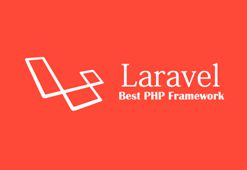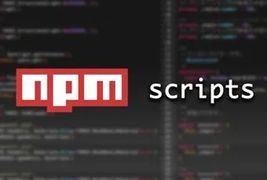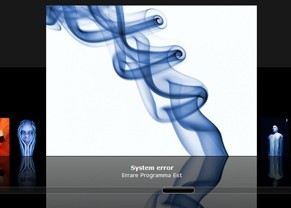你值得了解的JavaScript“继承之jquery”使用方法(代码详解)
本篇文章给大家了解一下JS-继承之jquery使用方法,小伙伴们可以参考一下。

jquery截止到当前已经 3.3.1 版本了,如今随着各种浏览器的盛行,前端的框架层出不穷,jquery独步天下,老夫写代码只用jquery,拿起代码就是干的辉煌时代已经过去了。
2006 年,jQuery的第一个版本的面世,凭借着简洁、灵活的编程风格受到了开发者的喜爱。而它本身是一个JavaScript框架,它的设计的宗旨是“write Less,Do More”,即倡导写更少的代码,做更多的事情。它封装了JavaScript常用的功能代码,提供一种简便的JavaScript设计模式,优化HTML文档操作、事件处理、动画设计和Ajax交互。
从之前的风靡到如今的被抛弃,究其原因,不少前端工程师表示,对于jQuery来说,大量的操作DOM虽然方便,但是会牺牲很多页面的性能。另一方面,现阶段React、Vue和Angularjs等主流前端框架并不依赖jQuery,都可以独立使用。况且浏览器的兼容问题越来越少,当浏览器兼容不再是问题时,jQuery的价值就大打折扣了
就在微软收购github的 52 天,github改变也已经放弃了jquery,奇替代方案使用了原生的 js:
使用querySelectorAll来查询DOM节点;
使用fetch来代替ajax;
事件处理使用了事件代理;
使用DOM标准化写了polyfill;
使用了自定义元素。

假如不用,学习下还是可以的
本文粗燥的实现jquery的ready、each、bind、``$.fn.extend、$.extend
初始化$
(function (win) {
var _$ = function (selector, context) {
/**
* 通常咱们定义一个 函数 var Fun = function(){}
* 然后定义一个 Fun.prototype.init = function(){}
* 那么咱们调用init 的时候 得先要实例化对象 var f = new Fun()
* 然后f.init()
* 这里就省去了 var $ = new $()
*/
return new _$.prototype.Init(selector, context);
};
_$.prototype = {
//初始化$
Init: function (selector, context) {
this.elements = [];
/**
* 传入的类型是function 就执行ready事件,如果是document 就将document对象插入到this.elements
* 主要就是判断$(document).ready 和 $(function(){}) 这两种的ready事件的写法
*/
if (typeof selector === "function") {
this.elements.push(document);
this.ready(selector);
} else {
var context = context || document;
var isDocument = (ele) =>
Object.prototype.toString.call(ele) == "[object HTMLDocument]" ||
"[object Document]";
if (isDocument(selector)) {
this.elements.push(selector);
} else {
/**
* 如果是字符串的话就查询该节点 $('.class') | $('#id')
*/
if (context.querySelectorAll) {
var arr = context.querySelectorAll(selector);
for (var i = 0; i < arr.length; i++) {
this.elements.push(arr[i]);
}
}
}
}
},
//实现each
each: function (callback) {},
//实现ready
ready: function (callback) {},
//实现bind
bind: function (type, callback) {},
};
/**
* 让两个作用域不一样的对象共享一个方法,让他们的原型指向一致,即Init.prototype = _$.prototype
* 那么原型一致之后 就可以共享this.elements 属性了。
*/
_$.prototype.Init.prototype = _$.prototype;
window.$ = _$;
})(window || global);ready
//实现ready
ready: function (callback) {
var isDocument = (ele) => Object.prototype.toString.call(ele) == '[object HTMLDocument]' || '[object Document]'
//如果已经取得了节点
if (isDocument(this.elements[0])) {
if (document.addEventListener) { //判断火狐、谷歌
/**
* DOM树构建完成的时候就会执行DOMContentLoaded
* 页面上所有的DOM,样式表,脚本,图片,flash都已经加载完成了,才会触发window.onload
* 这也就是$(document).ready() 比 window.onload 执行早的原因
*
* arguments.callee 博客里面有一篇文章 [js-递归] 里面专门讲到了,这里不再解释了
*/
document.addEventListener('DOMContentLoaded', function () {
document.removeEventListener('DOMContentLoaded', arguments.callee, false)
callback()
}, false)
} else if (document.attachEvent) { //判断IE
document.attachEvent('onreadystatechange', function () {
if (document.readyState == 'complete') {
document.detachEvent('onreadystatechange', arguments.callee);
callback()
}
})
} else if (document.lastChild == document.body) { //body已经加载完了,就直接回调了
callback()
}
}
},each
//实现each
each: function (callback) {
if (this.elements.length > 0) {
for (var i = 0; i < this.elements.length; i++) {
callback.call(this, this.elements[i], i);
}
}
},bind
//实现bind
bind: function (type, callback) {
if (document.addEventListener) { //判断火狐、谷歌
this.each(function (item, i) {
item.addEventListener(type, callback, false)
})
} else if (document.attachEvent) { //判断IE
this.each(function (item, i) {
item.attachEvent('on' + type, callback)
})
} else {
this.each(function (item, i) { //其他浏览器 egg: item.onclick = function(){}
item['on' + type] = callback
})
}
}$.fn.extend/$.extend
$.fn.extend是为查询的节点对象扩展方法,是基于$的原型扩展的方法
$.extend是扩展常规方法,是$的静态方法
官方给出解释:
jQuery.extend(): Merge the contents of two or more objects together into the first object.(把两个或者更多的对象合并到第一个当中)
jQuery.fn.extend():Merge the contents of an object onto the jQuery prototype to provide new jQuery instance methods.(把对象挂载到jQuery的prototype属性,来扩展一个新的jQuery实例方法)
$.fn.extend方法的初衷是我们扩展之后可以用$("").newMetod()这样访问,实际上就是给$原型加一个extend方法。这中间的fn其实类似于命名空间的作用,没什么实际的意义。为的是和$.extend作区分
$.fn.extend
; (function (win) {
...
_$.prototype.Init.prototype = _$.prototype;
_$.fn = _$.prototype; //把对象挂载到jQuery的prototype属性
var isObj = (o) => Object.prototype.toString().call(o) === '[object Object]';
$.fn.extend = function (obj) {
if (isObj(obj)) {
for (var i in obj) {
this[i] = obj //注意这里的this指向是 $.prototype
}
}
}$.extend
var isObj = (o) => Object.prototype.toString().call(o) === '[object Object]';
...
_$.extend = function (obj) {
if (isObj(obj)) {
for (var i in obj) {
this[i] = obj[i]; //注意这里的this指向是 $
}
}
}这俩看上去一模一样啊,没啥区别,注释里面已经说了,this指向不同。咱们来看个例子:
<!DOCTYPE html>
<html>
<head>
<title>jQuery.extend()与jQuery.fn.extend()区别</title>
<meta charset="utf-8" />
<script type="text/javascript" src="jquery.js"></script>
<!-- 开始扩展 -->
<script type="text/javascript">
(function ($) {
$.extend({
sayHello: function () {
console.log("Hello");
},
});
$.fn.extend({
sayHello: function () {
console.log("Hello");
},
});
})(jQuery);
</script>
<!-- 调用 -->
<script type="text/javascript">
$(document).ready(function () {
//$.extend扩展调用
$.sayHello();
//$.fn.extend扩展调用
$("#test").sayHello();
});
</script>
</head>
<body>
<div id="test"></div>
</body>
</html>这样以来就看的很明白了。jQuery.extend(object); 为扩展jQuery类本身,为自身添加新的方法。$.xxx()
jQuery.fn.extend(object);给jQuery对象添加方法$('#test').xxx()
$.extend常见用法
//在jquery全局对象中扩展一个net命名空间。
$.extend({ net: {} });
//方法扩展到之前扩展的Jquery的net命名空间中去。
$.extend($.net, {
sayHello: function () {
console.log("Hello");
},
});
//extend方法还有一个重载原型
//extend(boolean,dest,src1,src2,src3...),第一个参数boolean代表是否进行深度拷贝
var a = { protocol: "http", hash: { a: 1, b: 2 } };
var b = { host: "chuchur.com", hash: { b: 1, c: 2 } };
var result = $.extend(true, {}, a, b);
console.log(result); //{ protocol: 'http',host: 'chuchur.com', hash: { a: 1, b: 1,c:2 } }
var result = $.extend(false, {}, a, b);
console.log(result); //{ protocol: 'http',host: 'chuchur.com', hash: { b: 1, c:2 } }完整代码
(function (win) {
var _$ = function (selector, context) {
/**
* 通常咱们定义一个 函数 var Fun = function(){}
* 然后定义一个 Fun.prototype.init = function(){}
* 那么咱们调用init 的时候 得先要实例化对象 var f = new Fun()
* 然后f.init()
* 这里就省去了 var $ = new $()
*/
return new _$.prototype.Init(selector, context);
};
_$.prototype = {
//初始化$
Init: function (selector, context) {
this.elements = [];
/**
* 传入的类型是function 就执行ready事件,如果是document 就将document对象插入到this.elements
* 主要就是判断$(document).ready 和 $(function(){}) 这两种的ready事件的写法
*/
if (typeof selector === "function") {
this.elements.push(document);
this.ready(selector);
} else {
var context = context || document;
var isDocument = (ele) =>
Object.prototype.toString.call(ele) == "[object HTMLDocument]" ||
"[object Document]";
if (isDocument(selector)) {
this.elements.push(selector);
} else {
/**
* 如果是字符串的话就查询该节点 $('.class') | $('#id')
*/
if (context.querySelectorAll) {
var arr = context.querySelectorAll(selector);
for (var i = 0; i < arr.length; i++) {
this.elements.push(arr[i]);
}
}
}
}
},
//实现each
each: function (callback) {
if (this.elements.length > 0) {
for (var i = 0; i < this.elements.length; i++) {
callback.call(this, this.elements[i], i);
}
}
},
//实现ready
ready: function (callback) {
var isDocument = (ele) =>
Object.prototype.toString.call(ele) == "[object HTMLDocument]" ||
"[object Document]";
//如果已经取得了节点
if (isDocument(this.elements[0])) {
if (document.addEventListener) {
//判断火狐、谷歌
/**
* DOM树构建完成的时候就会执行DOMContentLoaded
* 页面上所有的DOM,样式表,脚本,图片,flash都已经加载完成了,才会触发window.onload
* 这也就是$(document).ready() 比 window.onload 执行早的原因
*
* arguments.callee 博客里面有一篇文章 js-递归里面专门讲到了,这里不再解释了
*/
document.addEventListener(
"DOMContentLoaded",
function () {
document.removeEventListener(
"DOMContentLoaded",
arguments.callee,
false
);
callback();
},
false
);
} else if (document.attachEvent) {
//判断IE
document.attachEvent("onreadystatechange", function () {
if (document.readyState == "complete") {
document.detachEvent("onreadystatechange", arguments.callee);
callback();
}
});
} else if (document.lastChild == document.body) {
//body已经加载完了,就直接回调了
callback();
}
}
},
//实现bind
bind: function (type, callback) {
if (document.addEventListener) {
//判断火狐、谷歌
this.each(function (item, i) {
item.addEventListener(type, callback, false);
});
} else if (document.attachEvent) {
//判断IE
this.each(function (item, i) {
item.attachEvent("on" + type, callback);
});
} else {
this.each(function (item, i) {
//其他浏览器 egg: item.onclick = function(){}
item["on" + type] = callback;
});
}
},
};
/**
* 让两个作用于不一样的对象共享一个方法,让他们的原型指向一直,即Init.prototype = _$.prototype
* 那么指向之后 就可以共享this.elements 属性了。
*/
_$.prototype.Init.prototype = _$.prototype;
var isObj = (o) => Object.prototype.toString().call(o) === "[object Object]";
$.fn.extend = function (obj) {
if (isObj(obj)) {
for (var i in obj) {
this[i] = obj; //注意这里的this指向是 $.prototype
}
}
//....这里是简写
};
_$.extend = function (obj) {
if (isObj(obj)) {
for (var i in obj) {
this[i] = obj[i]; //注意这里的this指向是 $
}
}
//....这里是简写
};
window.$ = _$;
})(window || global);【完】
本文网址:https://www.zztuku.com/detail-9078.html
站长图库 - 你值得了解的JavaScript“继承之jquery”使用方法(代码详解)
申明:如有侵犯,请 联系我们 删除。








您还没有登录,请 登录 后发表评论!
提示:请勿发布广告垃圾评论,否则封号处理!!